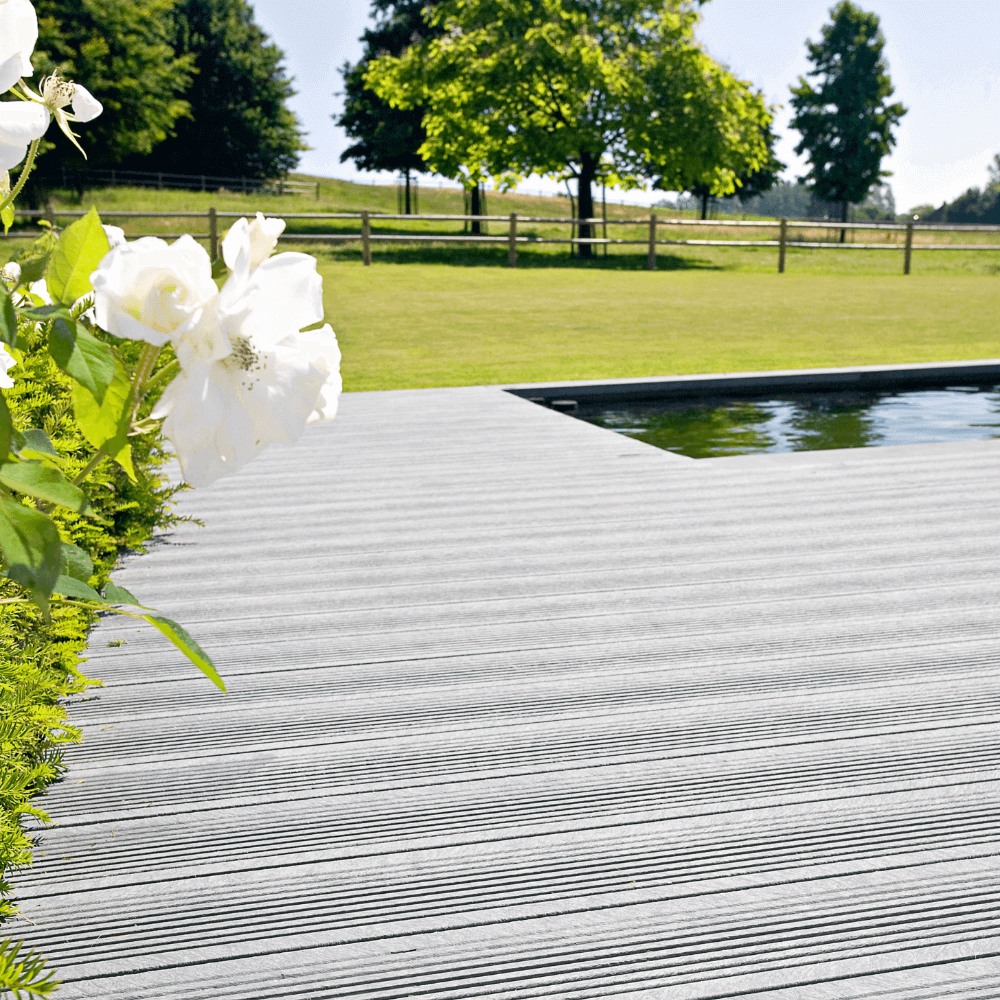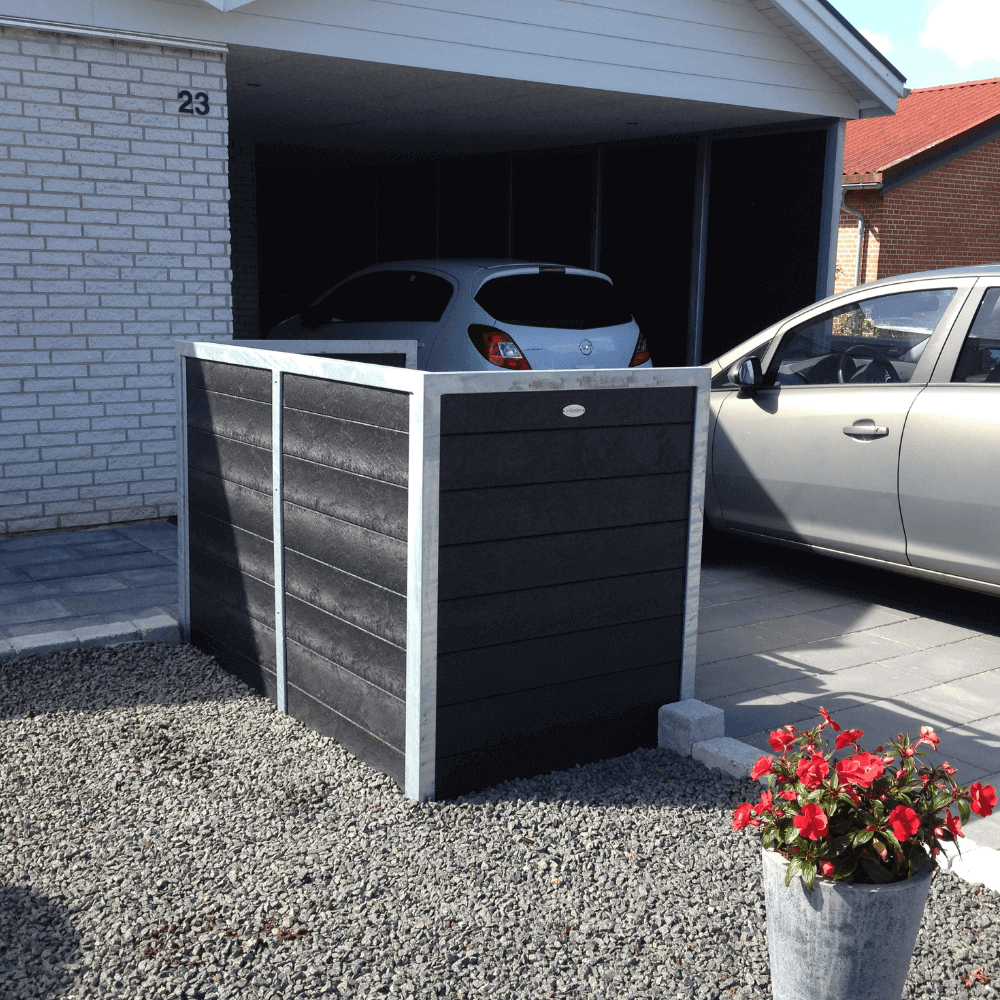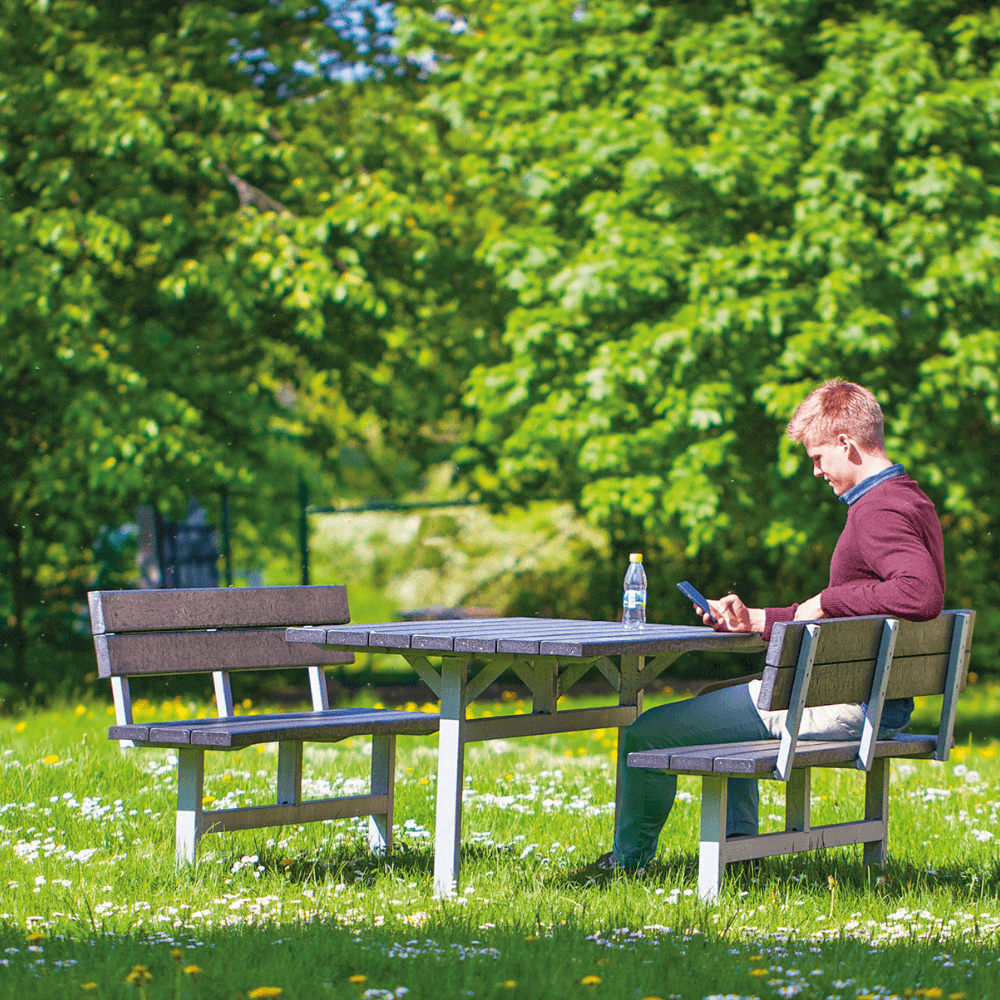This little "manual" for growing your own vegetables was written by Peter Norris in 2010.
Peter Norris has 30 years of experience in organic gardening. He is an expert in growing vegetables also in the off-season, and therefore has fresh vegetables most of the year.
The kitchen garden provides the family with pretty much everything they need of greenery. Without the use of herbicides and fertilizers.
Peter has used fibertex to screen against pests. Here, the insect net on GrowCamp's covered raised beds can also be used. In addition, GrowCamp's window foil can provide greenhouse heat during the outer periods. GrowCamp's net and plastic foil are attached with velcro - so it is easy to open when the plants need to be cared for.
Lots of vegetables on a small area
By Peter Norris
You do not have to plow the whole lawn up and plant several hundred square meters of kitchen garden to be able to supply the family with fresh vegetables in the period from May to December. Much less can do that. It just requires planning and intensive cultivation of the land.
Lots of vegetables on a small area require the following three simple cultivation methods:
.
1: Bounded beds
The soil is cultivated in fixed, delimited beds with passages in between. The beds can be as long as you want, but the width must not exceed 125 cm, so you can reach the middle of the bed without stepping on it. In this way, the soil is kept loose, and the area can be planted much closer than if you were to be able to walk between the rows of vegetables. The dividend per. square meters will be larger in other words - and at the same time there will be less light and space for weeds.
.
2: Coverage against frost
The season is stretched by covering the ground with clear plastic or non-woven fabric in early spring, and sometimes also in late autumn. The soil temperature thus becomes higher and protection against light frost.
.
3: Pre-cultivation
Many of the plants are grown by pre-cultivation, ie. they are sown indoors in pots or trays and planted only when there is vacant land. Thus, the plants do not occupy any cultivation area during the first part of their development, which they do by sowing directly in the bed. The same piece of land can in this way manage to yield more crops during a season. Such an intensive use of the land obviously requires a lot of nourishment. Every time you plant new plants as a replacement for the ones harvested, you give the bed a layer of compost.
To illustrate how you can get quite a lot of food out of a small area, here is a bid for a kitchen garden of a modest 20 m² (including walkway area!). It can be done in many different ways with infinitely many combinations - but here I have chosen what I grow myself, what I think is most delicious to get completely fresh, what can be most expensive to buy, and what gives fresh vegetables in so long a period as possible. And quite a few different crops are played with, precisely to show a wide range of possibilities.
If no major disasters occur (severe frost in May for example!), This small kitchen garden may end up providing the family with something along the lines of:
• 6 kilos of broccoli
• 20–25 spit bowl
• 3 kilos of kale
• 100 salad heads
• 5 kilos of shallots
• 15 kilos of carrots
• 5 kilos of leeks
• 5 kilos of peas
• 5 kilos of parsnips
• 10 kilos of beets
• 30 corn
• 5–10 kilos of spinach
• 15–20 kilos of potatoes
• 20 kilos of beans
• 50 cucumbers
• 10–20 courgettes
- as well as arugula, spring onions and a cave mass of radishes
This corresponds (with a quick estimate) to a value of at least DKK 4,000-5,000 (2010), if you have to buy it all in your local use - at the same time as you get a quality and freshness that can not be bought for money. And it's not so bad even :-)
The kitchen garden
The kitchen garden is divided into 4 beds, which are 3 meters long (north-south direction) and 1.25 m wide. There are 50 cm between the beds to walk on.
The beds are grown with a 4-year crop rotation, where the main crops are located as follows:Bed 1: Early green - later different cabbage
Bed 1: Early green - later different cabbage
Bed 2: Peas - root vegetables - corn
Bed 3: Carrot - lettuce - onion - leeks
Bed 4: Potatoes - beans
The crops move beds every year. Thus, for next year, bed 1 will contain bed 4’s crops, bed 2 will contain bed 1’s crops, bed 3 will contain bed 2’s crops, while bed 4 will contain bed 3’s crops. After four years, the crops will have been through all four beds.
Bed 1
Early greens for the salad - and later cabbage
This bed is covered with plastic or non-woven fabric from early March, so that the soil is heated and the earliest green can be grown under protected conditions. At the same time, some of the weeds are provoked to germinate early, so you can get it killed before sowing or planting.
• In the first square meter you start approx. April 1 by planting small plants of lettuce and spinach, which are sown inside small pots in early March. The planting can be done as 5 rows with 25 cm distance between the rows - eg 3 rows with different lettuce varieties that have different development times (15 plants in total) and 2 rows of spinach set reasonably close to give the first baby spinach. Between these rows, spring onions are planted, which have also been sown a month earlier.
• In the second square meter, sow 4 rows of spinach and a row of arugula with a distance of 25 cm between the rows. Different types of radishes were seen in the middle rows.
• A few weeks later, the third square meter was sown with rows of spinach with radishes and spring onions in between to extend the harvest period further.
And then it's the turn of the cabbages: the catch crop throughout this bed is different varieties of cabbage. Cabbage provides a lot of filling food for a long time and is one of the healthiest things to put in your mouth. • At the end of May, the first square meter is harvested. The area is given a layer of compost, after which spit cabbage and savoy cabbage are planted, which are sown in mid-April. They can be planted in blocks with a distance of 35 cm to all sides, so that there is room for 15 pieces. Spit bowl develops quickly, and is ingenious to grow because you can harvest from the same plant twice. When cutting a spit bowl head, leave the stem and the lower 3–4 leaves standing. Shortly afterwards, the plant forms new small heads, where one is left to sit and develop into another small pointed bowl. Savoy cabbage, on the other hand, does not develop as quickly. On the other hand, it can withstand a lot of frost, so it will be fresh green to harvest until Christmas.
• The next square meter that becomes vacant is planted with broccoli. The broccoli is sown indoors in early May. Choose a variety that can be planted densely (25 cm apart) and that continues to produce side shoots after the main shoot has been harvested. This way, you can keep picking up a serving of broccoli once a week until the frost kills the plants. If you first cover the bed with plastic in October, you have them a little longer. If you do not eat as much broccoli, half of the piece can be replaced with cauliflower. There are also varieties that can be planted as close as 25 × 25 cm. It would then yield 10 broccoli and 10 cauliflower spread over 4 rows.
• In the third square meter, kale can be planted to give even more winter green. As kale can be sown as late as late June / early July, the area can give another harvest of radishes / arugula / lettuce before the kale is planted out in late July. If the kale is planted in 3 rows with 50 cm in between (this can give 3–4 kilos of kale), you can sow radishes or spinach in the middle rows. Another option is to sow Chinese radishes in the middle rows. They last quite a long time and can withstand light frost.
Instead of the suggested cabbage varieties, one can plant mizuna, pak choi and other Asian cabbages. For the sake of crop rotation, it is just a matter of having only the cruciferous in this bed. It is highly recommended to cover all cabbage plants with bionet or non-woven fabric to get rid of cabbage larvae - so you do not get worms in the radishes.
Bed 2
Peas and corn (and some root vegetables)
Around 1 April, a double row of peas (10 cm between the two rows) is placed in the middle of the entire length of the bed. Between the two rows are put wire fences, rionet or something else to support the plants. To stretch the pea harvest, you can choose to plant one piece of the row with pea plants, which were sown inside 3 weeks earlier (32 plants give 1.5 meters double row), while the other half was sown directly. You can also choose to let part of the pea fence consist of sugar peas - you just have to make sure that it is the low pea varieties.
• Onions are placed along the edges of the bed at a distance of 10 cm. Both red onions and green onions, as well as common yellow onions. It is not grown here for winter storage - you start taking the crispy, new onions as soon as you think you can be familiar with it.
On one side of the bed - between peas and onions - parsnips were seen later in April. Parsnips can stay in the ground all winter. Sow in a row with 3–4 seeds every 20 cm (parsnips take a long time to germinate) and keep one plant in each place. In the row, you can sow radishes as desired and needed. Then you know where you have the parsnips.
If it is to be really intense, you can also see a number of spinach approx. 10 cm from the bulbs. The onions just need to have room to protrude above the spinach leaves, and the parsnips should probably do.
On the other side of the bed, beets were seen in the middle row between peas and onions. Here you can sow (especially the round ones) in a double row with 15 cm between the rows. Some of the beets can be sown indoors 3-4 weeks earlier, so you get an earlier harvest of new baby beets.
The entire bed is covered with non-woven fabric the first month. In particular, the peas should be kept covered until they are approx. 5 cm tall - otherwise you will discover early in the morning that the pigeons have had a delicious meal.
• In early July, the bulbs are either eaten or harvested and the peas are done. Now plant 3 rows of corn in their place. Corn is simply the crop that can not be bought fresh enough - they must be harvested at the same time as you put the boiling water over! The maize is sown in mid-June (here root trainers are perfect for the purpose) and planted at a distance of 20–50 cm in the rows depending on the variety. It produces corn in late September / early October.
Between the corn are still beets and parsnips. The parsnips take care of themselves while some of the beets are eaten. In mid-July, a spinach variety sprouts for autumn cultivation, and during August, the small spinach plants are planted where there is room between the beets. You can then sow another box of spinach in mid-August and keep planting in September, also close to the corn. They will soon be cut down anyway - and then there is fresh spinach in September-October. When the corn is finished in October, cover the bed with plastic or non-woven fabric. Then you can harvest spinach for a longer period.
The plan of this bed is determined by the longitudinal direction of the bed going north-south. If it is facing east-west, the peas should be sown in 6 double pulls across the bed. Parsnips and beets were sown between the double pulls. However, it does not allow for early beets - they can survive in the shade from the peas until the light breaks out when the peas are removed - but it goes a bit slower!
Bed 3
Carrot - lettuce - bulbs
No matter how big a kitchen garden you have, it is a gift to be able to pick fresh salad for a large part of the year. Therefore, a significant portion of this bed is devoted to the purpose.
• In the first square meter, different types of lettuce are planted, which have been sown in early March. The salads must have different development times, so that you do not suddenly have 25 heads ready for harvest at once, but can harvest lettuce from the beginning of May until into June. You can put a single row of lettuce, which gives fresh leaves over a longer period. The salad is set with 25 cm between the rows, which can be sown radishes or a row of arugula in between - and the bed is covered with non-woven fabric at the beginning. As the salad is harvested and there is a little bare soil, carrots are sown in rows with 15 cm in between. Carrots can be sown until July, so you just keep sowing until the whole area is utilized. The carrots can stay in the ground for as long as you want - with a view of the autumn night frost, cover with wet leaves (from trees!), And with a view of even more frost, you can cover with a winter mat. In this way, fresh carrots can be harvested all winter (and the colder the soil gets without freezing, the better they will taste) - but for most, they are probably eaten before.
• In the second square meter you can put shallots with 15 cm between each way. Unlike the bulbs in bed 1, the shallots are grown as camouflage - they are harvested in early July, hung for drying and used during the autumn. You can choose to put garlic in a row or two instead of shallots - the yield will not be as great as if they have been put in the autumn, but completely fresh garlic is and will be a delicacy. • As soon as the onion piece is free, a new batch of lettuce is planted, which is sown in early June. At the same time, a new batch of lettuce is pre-cultivated, which is planted in future holes. The bed is covered with non-woven fabric when it becomes autumn. In September, lettuce develops more and more slowly and then more or less stops. It is therefore important to time the sowing so that the heads are almost fully developed at that time - then they can stand for a long time until the frost kills them. Alternatively, spinach, which is sown in mid-July, can also be planted.
• In the third square meter of this bed, early carrots were also seen in early April. They were seen in rows 20 cm apart. Radishes were seen in the middle rows. The radishes are eaten during May, and replaced by winter leeks in early June. The leeks were sown in the beginning of April - and if you should forget about it, you can buy trays with seedlings in any nursery. The carrots are harvested from late June. As the leeks develop throughout the fall, most carrots are eaten before the leeks really need the space.
The bed is kept covered with bionet or non-woven fabric, so you avoid carrot flies and leek moths.
Bed 4
Potatoes and beans
No kitchen garden without the luxury of harvesting new potatoes in early summer. Therefore, this whole bed is set aside at the beginning of the season to be able to produce new potatoes for most of the month of June.
• In mid-March, cover the bed with plastic so that the soil temperature rises. Around 1 April, the germinated potatoes (they are germinated at least from the end of February) are placed in rows with a distance of 50 cm across the bed. One can put the very earliest (such as Solist or Hamlet - Soloist is earliest) at the northern end of the bed, and the less early in the rest. The tubers are laid 25 cm apart.
• Between the potato rows, you can either plant small plants of spinach, or for example arugula or radishes. They are harvested before the potato plants close the row. Non-woven fabric or (best) plastic is laid over the bed - preferably over some arches. When the daytime temperature rises above 10 degrees, cut some ventilation holes in the plastic - and keep an eye on whether it gets so hot that the leaves are scalded by the sun, because then the plastic is removed.
• In late May / early June, you can start harvesting the new potatoes starting from the northern end of the bed. This also gives some vacant land, which of course must be utilized: In this cultivation plan, there is so far a 'hole' in lettuce production. Beds 1 and 3 provide lettuce in May and June, as well as from August. Bed 4 should make sure that there is also salad in the month of July. IN
In early May, a bunch of lettuce was seen, which is planted as the potatoes are harvested. You can plant in two rows in the middle of the bed with 20 cm between the rows - and here you will be able to harvest in July until the subsequent crop, namely beans, shuts off the light for the lettuce plants.
• Only in July are the potatoes harvested. A bean stand is made with 5 bamboo poles on each side of the bed with approx. 60 cm between the bars. In mid-June, bar beans have been sown in root trainers or milk cartons, and these are ready for planting the first week of July. 3-4 plants are planted per. rod. The stand should preferably be at least 2 meters high, because the beans shoot merrily and can be over 3 meters long. There are also easily more beans coming out of it than you can manage to eat, but since beans are some of the most suitable for freezing, they are perfectly fine to be able to take off during the winter.
• If you think that 20–25 kilos of beans are still too much, the last pair of (southernmost) sticks can instead be used for a couple of outdoor lettuce cucumbers that are allowed to climb up to them. The cucumbers are also sown in mid-June and planted at the same time as the beans. And if you want to play a little with what can be done, you can put a single courgette in the middle of the southernmost end of the bed just below the cucumbers. After all, there can be so much sunlight here that you can get a lot of (free) courgettes.
Sowing calendar
February
Potatoes, germinate
March
Pre-cultivation: spring onions, beets, lettuce, spinach, peas
Direct sowing in bed: radishes, arugula
April
Pre-cultivation: savoy cabbage, spiced cabbage, winter leeks
Direct sowing in bed: carrots, put potatoes, put onions, put parsnips, radishes, arugula, beets, spinach, peas
May
Pre-cultivation: cauliflower, broccoli, lettuce
Direct sowing in bed: spring onions, carrots, radishes, spinach
June
Pre-cultivation: courgette, free-range cucumber, kale, corn, lettuce, bean
Direct sowing in bed: carrots, radishes, arugula
July
Pre-cultivation: lettuce, autumn / winter spinach
Direct sowing in bed: Asian cabbage, carrots, Chinese radish, radishes, spinach
August
Spinach
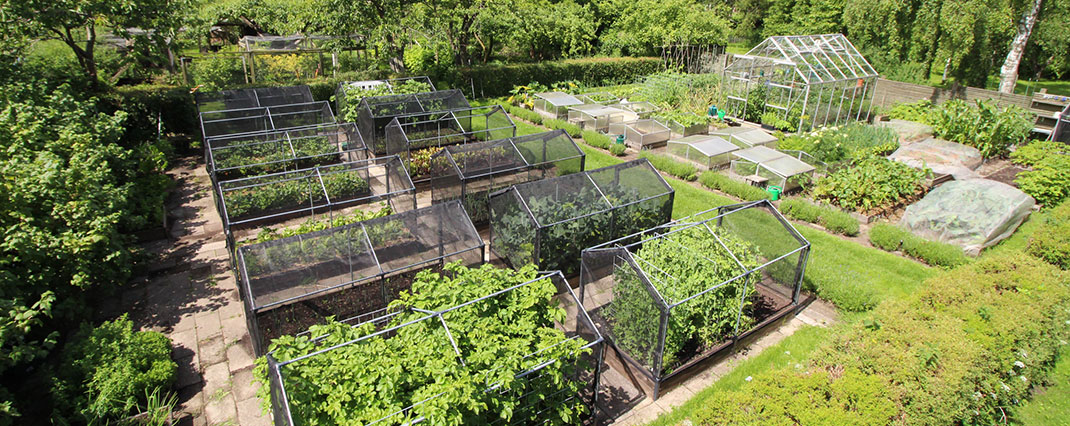








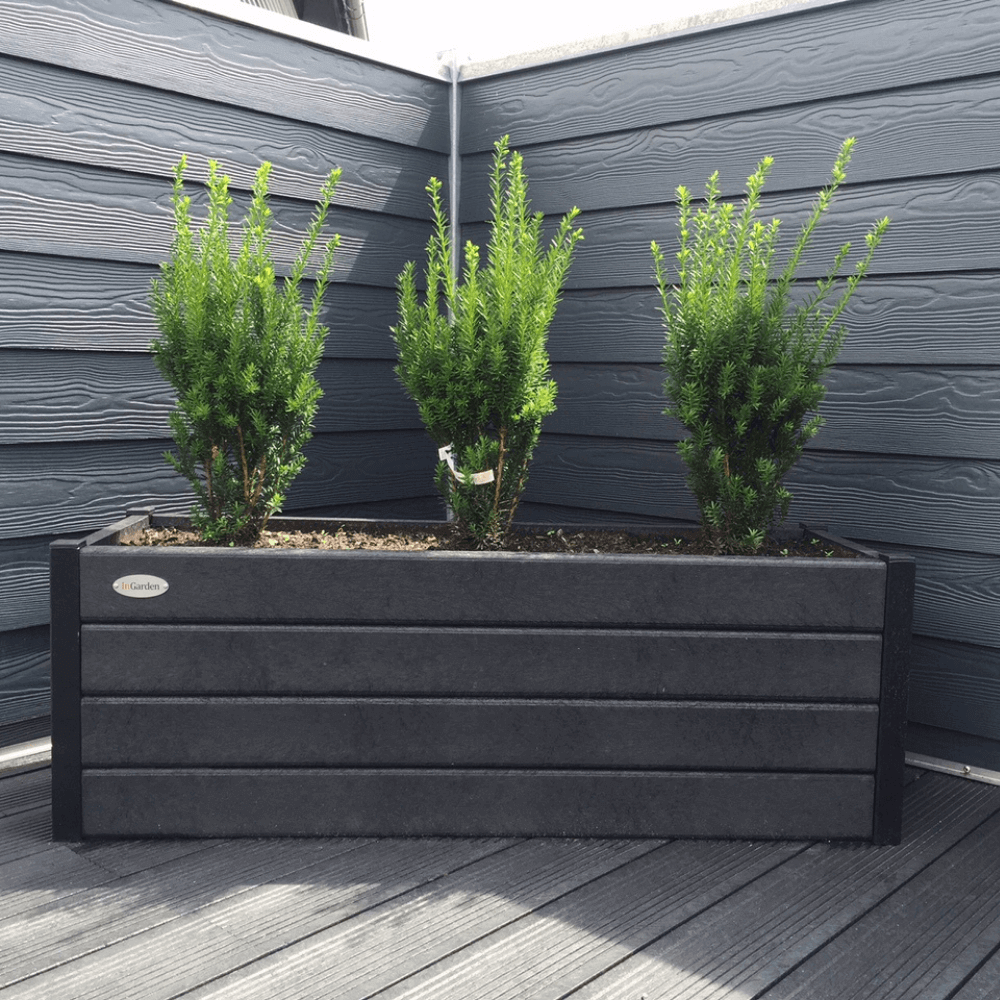
-1.backdrop.png)
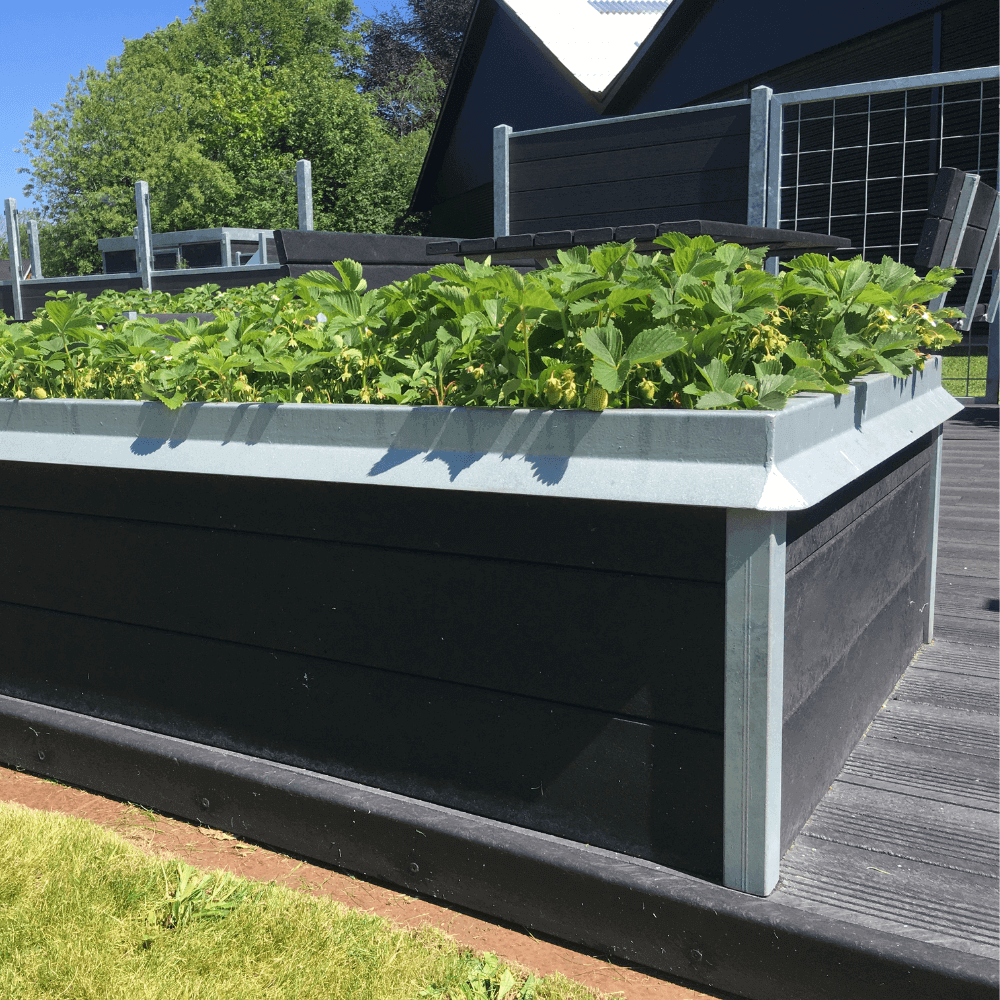
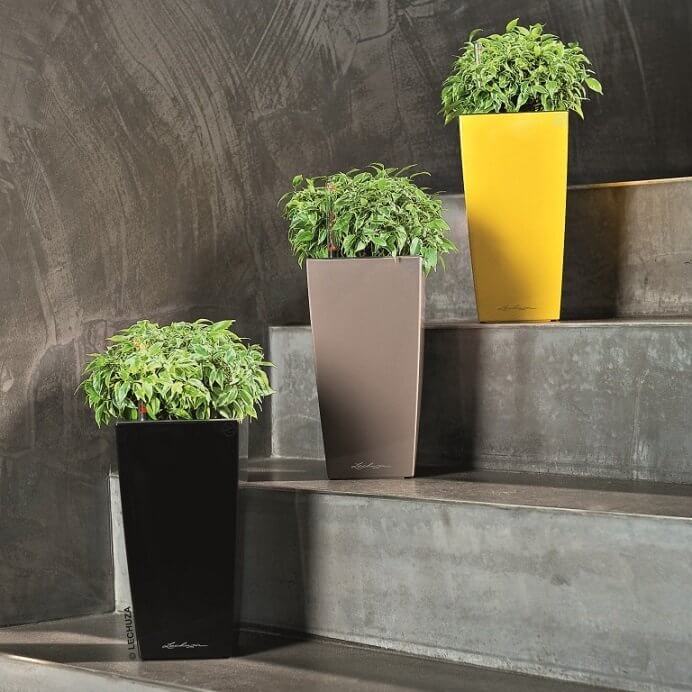
-1.backdrop.png)
